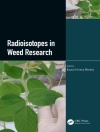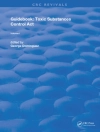Life Science studies in space were initially driven by the need to explore how man could survive spaceflight conditions; the effects of being launched un- der high accelerations, exposed to weightlessness and radiation for different periods of time, and returned to Earth in safety. In order to substantiate the detailed knowledge of potentially adverse effects, many model experiments were launched using organisms which ranged from bacteria, plants, inverte- brates, rodents and primates through to man. Although no immediate life threatening effects were found, these experiments can be considered today as the precursors to life science research in space. Many unexplained effects on these life forms were attributed to the condition of weightlessness. Most of them were poorly recorded, poorly published, or left simply with anecdotal information. Only with the advent of Skylab, and later Spacelab, did the idea emerge, and indeed the infrastructure permit, weightlessness to be considered as an ex- tended tool for research into some fundamental mechanisms or processes as- sociated with the effect of gravity on organisms at all levels. The initial hy- pothesis to extrapolate from hypergravity through 1 x g to near 0 x g effects could no longer be retained, since many of the experiment results were seen to contradict the models or theories in the current textbooks of biology and physiology. The past decade has been dedicated primarily to exploratory research.
Peter Bie & David Moore
Biological and Medical Research in Space [PDF ebook]
An Overview of Life Sciences Research in Microgravity
Biological and Medical Research in Space [PDF ebook]
An Overview of Life Sciences Research in Microgravity
¡Compre este libro electrónico y obtenga 1 más GRATIS!
Idioma Inglés ● Formato PDF ● ISBN 9783642610998 ● Editor Peter Bie & David Moore ● Editorial Springer Berlin Heidelberg ● Publicado 2012 ● Descargable 3 veces ● Divisa EUR ● ID 6328959 ● Protección de copia Adobe DRM
Requiere lector de ebook con capacidad DRM












